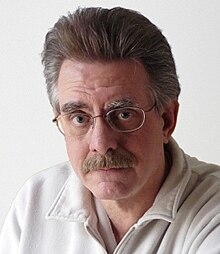
Lee Harvey Oswald was a U.S. Marine veteran who assassinated John F. Kennedy, the 35th president of the United States, on November 22, 1963.

The President's Commission on the Assassination of President Kennedy, known unofficially as the Warren Commission, was established by President Lyndon B. Johnson through Executive Order 11130 on November 29, 1963, to investigate the assassination of United States President John F. Kennedy that had taken place on November 22, 1963.

On November 22, 1963, John F. Kennedy, the 35th president of the United States, was assassinated while riding in a presidential motorcade through Dealey Plaza in Dallas, Texas. Kennedy was in the vehicle with his wife, Jacqueline, Texas Governor John Connally, and Connally's wife, Nellie, when he was fatally shot from the nearby Texas School Book Depository by former U.S. Marine Lee Harvey Oswald. The motorcade rushed to Parkland Memorial Hospital, where Kennedy was pronounced dead about 30 minutes after the shooting; Connally was also wounded in the attack but recovered. Vice President Lyndon B. Johnson was hastily sworn in as president two hours and eight minutes later aboard Air Force One at Dallas Love Field.

The single-bullet theory, also known as the magic-bullet theory by conspiracy theorists, was introduced by the Warren Commission in its investigation of the assassination of U.S. President John F. Kennedy to explain what happened to the bullet that struck Kennedy in the back and exited through his throat. Given the lack of damage to the presidential limousine consistent with it having been struck by a high-velocity bullet, and the fact that Texas Governor John Connally was wounded and was seated on a jumper seat 1+1⁄2 feet in front of and slightly to the left of the president, the Commission concluded they were likely struck by the same bullet.
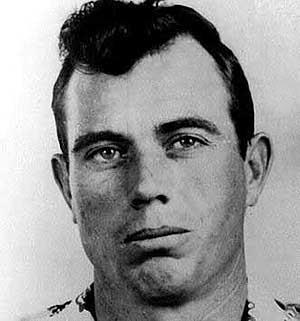
J. D. Tippit was an American World War II U.S. Army veteran and Bronze Star recipient, who was a police officer with the Dallas Police Department for 11 years. On November 22, 1963, less than one hour after the assassination of President John F. Kennedy, Tippit was shot to death in a residential neighborhood in the Oak Cliff section of Dallas, Texas. Lee Harvey Oswald was initially arrested for the murder of Tippit and subsequently charged for killing Kennedy but was murdered by Jack Ruby before he could stand trial.
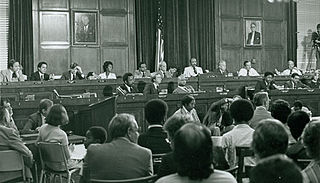
The United States House of Representatives Select Committee on Assassinations (HSCA) was established in 1976 to investigate the assassinations of John F. Kennedy and Martin Luther King Jr. in 1963 and 1968, respectively. The HSCA completed its investigation in 1978 and issued its final report the following year, which concluded that Kennedy was probably assassinated as a result of a conspiracy. In addition to now-discredited acoustic analysis of a police channel dictabelt recording, the HSCA also commissioned numerous other scientific studies of assassination-related evidence that corroborate the Warren Commission's findings.

Marina Nikolayevna Oswald Porter is a Russian-American woman who was the wife of Lee Harvey Oswald. She married Oswald during his temporary defection to the Soviet Union and emigrated to the United States with him. After the assassination of U.S. President John F. Kennedy and Oswald's murder, she testified against Oswald for the Warren Commission and remarried. She ultimately came to believe Oswald was innocent.

This article outlines the timeline of events before, during, and after the assassination of John F. Kennedy, the 35th president of the United States.

JFK Reloaded is a 2004 first-person shooter game developed and published by Traffic Games. It simulates the 1963 assassination of John F. Kennedy, the 35th president of the United States, according to the report of the Warren Commission. The player, controlling Lee Harvey Oswald, is tasked with recreating the three shots fired at Kennedy and gains higher scores the more accurately they line up with the report. Shots can be reviewed in slow motion and from multiple viewpoints.
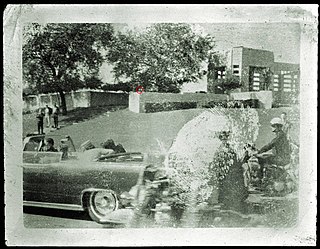
The Badge Man is a figure that is purportedly present within the Mary Moorman photograph of the assassination of United States president John F. Kennedy in Dealey Plaza on November 22, 1963. Conspiracy theorists have suggested that this figure is a sniper firing a weapon at the president from the grassy knoll. Although a reputed muzzle flash obscures much of the detail, the Badge Man has been described as a person wearing a police uniform—the moniker itself derives from a bright spot on the chest, which is said to resemble a gleaming badge.
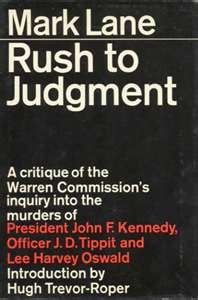
Rush to Judgment: A Critique of the Warren Commission's Inquiry into the Murders of President John F. Kennedy, Officer J.D. Tippit and Lee Harvey Oswald is a 1966 book by American lawyer Mark Lane. It is about the assassination of United States President John F. Kennedy and takes issue with the investigatory methods and conclusions of the Warren Commission. The book's introduction is by Hugh Trevor-Roper, Regius Professor of History at the University of Oxford. Although it was preceded by a few self-published or small press books, Rush to Judgment was the first mass market hardcover book to confront the findings of the Warren Commission.
The John F. Kennedy assassination rifle is the long-barrelled firearm that was used to assassinate John F. Kennedy, the 35th President of the United States.

Mortal Error: The Shot That Killed JFK is a 1992 nonfiction book by Bonar Menninger outlining a theory by sharpshooter, gunsmith, and ballistics expert Howard Donahue that a Secret Service agent accidentally fired the shot that actually killed President John F. Kennedy. Mortal Error was published by St Martin's Press in hardback, paperback, and audiobook.

James Robert Leavelle was a Dallas Police Department homicide detective who, on November 24, 1963, was escorting Lee Harvey Oswald through the basement of Dallas Police headquarters when Oswald was shot by Jack Ruby. Leavelle prominently was noted in films and photographs—including one that won a Pulitzer Prize—taken just as Ruby shot Oswald.
The John F. Kennedy assassination and the subsequent conspiracy theories surrounding it have been discussed, referenced, or recreated in popular culture numerous times.

Reclaiming History: The Assassination of President John F. Kennedy is a book by attorney Vincent Bugliosi that analyzes the events surrounding the assassination of United States President John F. Kennedy, focusing on the lives of Lee Harvey Oswald and Jack Ruby. He drew from many sources, including the Warren Report. Bugliosi argues that the Warren Commission's conclusion that Lee Oswald acted alone in shooting Kennedy is correct. The book won the 2008 Edgar Award for the Best Fact Crime category. Bugliosi explored the issues at length; the book is 1,632 pages. It was published with an accompanying CD-ROM containing an additional 1,000+ pages of footnotes. He analyzed both the assassination itself and the rise of the conspiracy theories about the event in the following years.

The Zapruder film is a silent 8mm color motion picture sequence shot by Abraham Zapruder with a Bell & Howell home-movie camera, as United States President John F. Kennedy's motorcade passed through Dealey Plaza in Dallas, Texas, on November 22, 1963. Unexpectedly, it captured the President's assassination.

The assassination of President John F. Kennedy on November 22, 1963 has spawned numerous conspiracy theories. These theories allege the involvement of the CIA, the Mafia, Vice President Lyndon B. Johnson, Cuban Prime Minister Fidel Castro, the KGB, or some combination of these individuals and entities. Some conspiracy theories have alleged a coverup by parts of the federal government, such as the original FBI investigators, the Warren Commission, or the CIA. Former Los Angeles District Attorney Vincent Bugliosi estimated that a total of 42 groups, 82 assassins, and 214 people had been accused at one time or another in various conspiracy scenarios.
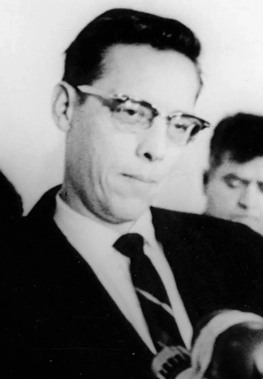
Earl Forrest Rose was an American forensic pathologist, professor of medicine, and lecturer of law. Rose was the medical examiner for Dallas County, Texas, at the time of the assassination of United States President John F. Kennedy and he performed autopsies on J. D. Tippit, Lee Harvey Oswald, and Jack Ruby. After being shoved by Kennedy's aides, he stepped aside and allowed Kennedy's body to be removed from Parkland Memorial Hospital without performing an autopsy.
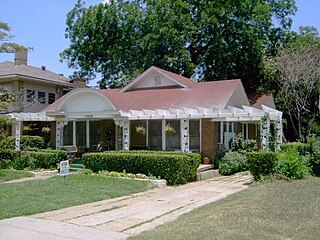
The house at 1026 N. Beckley Avenue in the Oak Cliff section of Dallas, Texas was the temporary residence of Lee Harvey Oswald at the time of the assassination of United States President John F. Kennedy. Oswald rented a room at this house for $8 a week, beginning October 14, 1963, under the name O.H. Lee. The building is located approximately 2 miles from the Texas School Book Depository, where Oswald began working on October 16.
